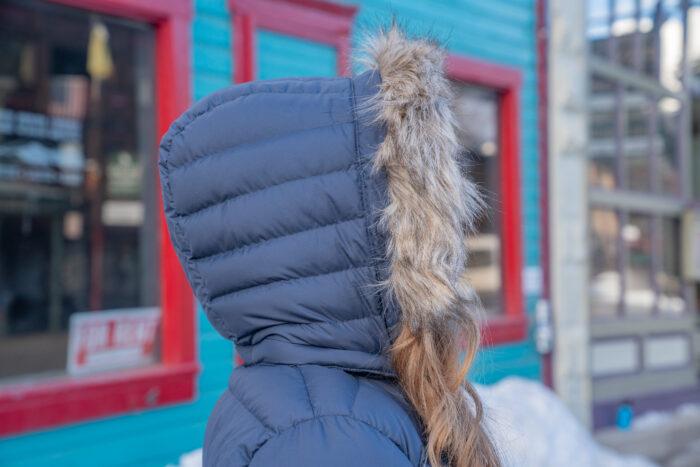If you live in a wintry environment or plan to visit one, you definitely don’t want to be sidelined for lack of cold-weather protection.
Whatever your cold weather itinerary entails, these winter jackets will help regulate your body temperature while also shielding you from wind, snow, and drizzle. Here we focus on warm, protective winter jackets and parkas geared toward everyday use.
On the other hand, there are plenty of performance-oriented winter jackets, too. That includes shells for skiing and snowboarding, compressible down jackets for backcountry alpine adventures, or active insulation layers for high-output activities like winter running or cross-country skiing.
If you’d like to learn more about the various women’s winter jackets for warmth and everyday use, their nitty-gritty features, and how to choose your jacket based on climate, scroll through our buyer’s guide and FAQ at the bottom of the page. You can also consult the comparison chart below to help steer your decision process.
Otherwise, read our full gear guide and check out our awarded picks below for the best women’s winter jackets of 2024.
Editor’s Note: We updated our Women’s Winter Jackets guide on January 12, 2024, to include one newly tested and awarded product.
The Best Women’s Winter Jackets of 2024
- Best Overall Women’s Winter Jacket: Rab Women’s Deep Cover Down Parka
- Best Budget Women’s Winter Jacket: REI Co-op Norseland Insulated Parka 2.0
- Runner-Up Best Women’s Winter Jacket: Stio Women’s Colter WINDSTOPPER Down Jacket
- Best Convertible 3-in-1 Women’s Winter Jacket: Patagonia Women’s Tres 3-in-1 Parka
- Best Women’s Winter Jacket for Plus, Tall, and Petite Sizes: Lands’ End Women’s Down Maxi Winter Coat
- Best Waterproof Winter Jacket for Women: Arc’teryx Patera Parka
- Most Pockets: Fjallraven Nuuk Parka
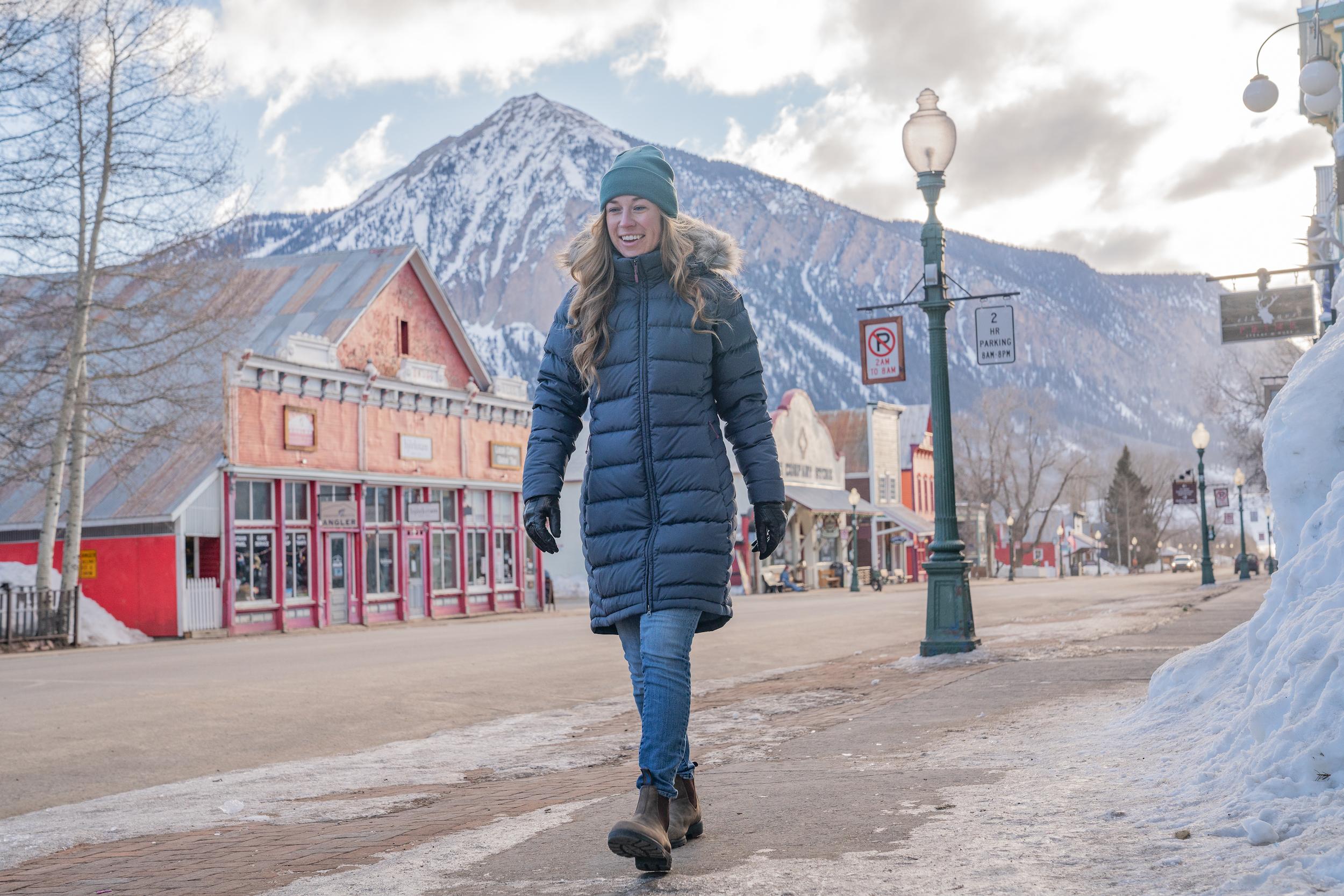
Women’s Winter Jackets Comparison Chart
Scroll right to view all of the columns: Price, Weight, Fill, Center Back Length, Climate.

How We Tested Women’s Winter Jackets
Our GearJunkie team has tested and reviewed dozens of women’s winter jackets in a range of cold-weather conditions across the country. For this guide, we examined the fine details of each jacket including comfort, functionality, durability, ergonomics, protection from the elements, ease of use, adaptability, and style. We also strongly considered the most popular, highly acclaimed, legacy, and size-inclusive winter coats for women across a range of price points and applications.
GearJunkie contributor Meghan LaHatte has resided in the high Rockies of Southwest Colorado for more than 5 years. Living in such a cold climate has allowed her to explore many winter sports and activities such as skiing, hiking, skinning, and camping — all of which require the warmest jackets possible. From chilly mornings spent on the trail to blizzardy afternoon dog walks, she tests women’s winter coats to their fullest potential.
Leading the crew, GearJunkie Senior Editor Morgan Tilton specializes in snowsports content. She’s been a gear journalist including covering snowsports for more than a decade. That includes reporting at nearly 16 outdoor industry trade shows for several publications from Outdoor Retailer Daily to Snow Show Daily, and serving as Snowboard Editor at Teton Gravity Research.
Raised in Telluride, Colorado, Tilton has been skiing and snowboarding for more than three decades including pulling on a warm winter coat before and after, while running errands, going to the gym, shoveling — you name it. Living in the frigid ski town of Crested Butte, Colo., Tilton is able to put these winter coats to the ultimate test.
We’ve cruised on our bikes, walked in blizzards, sat on park benches, cheered on cross-country ski races, shoveled our rigs out of powder piles, and commuted to the gym in these jackets. Several of our testers have beat up jackets in Colorado’s Gunnison Valley, one of the coldest, snowiest destinations in the United States.
What we like most about this selection of best picks is that each winter jacket can be worn running errands around town but can also be donned for a night out to dinner. We’re confident these women’s winter jackets are among the best on the market.
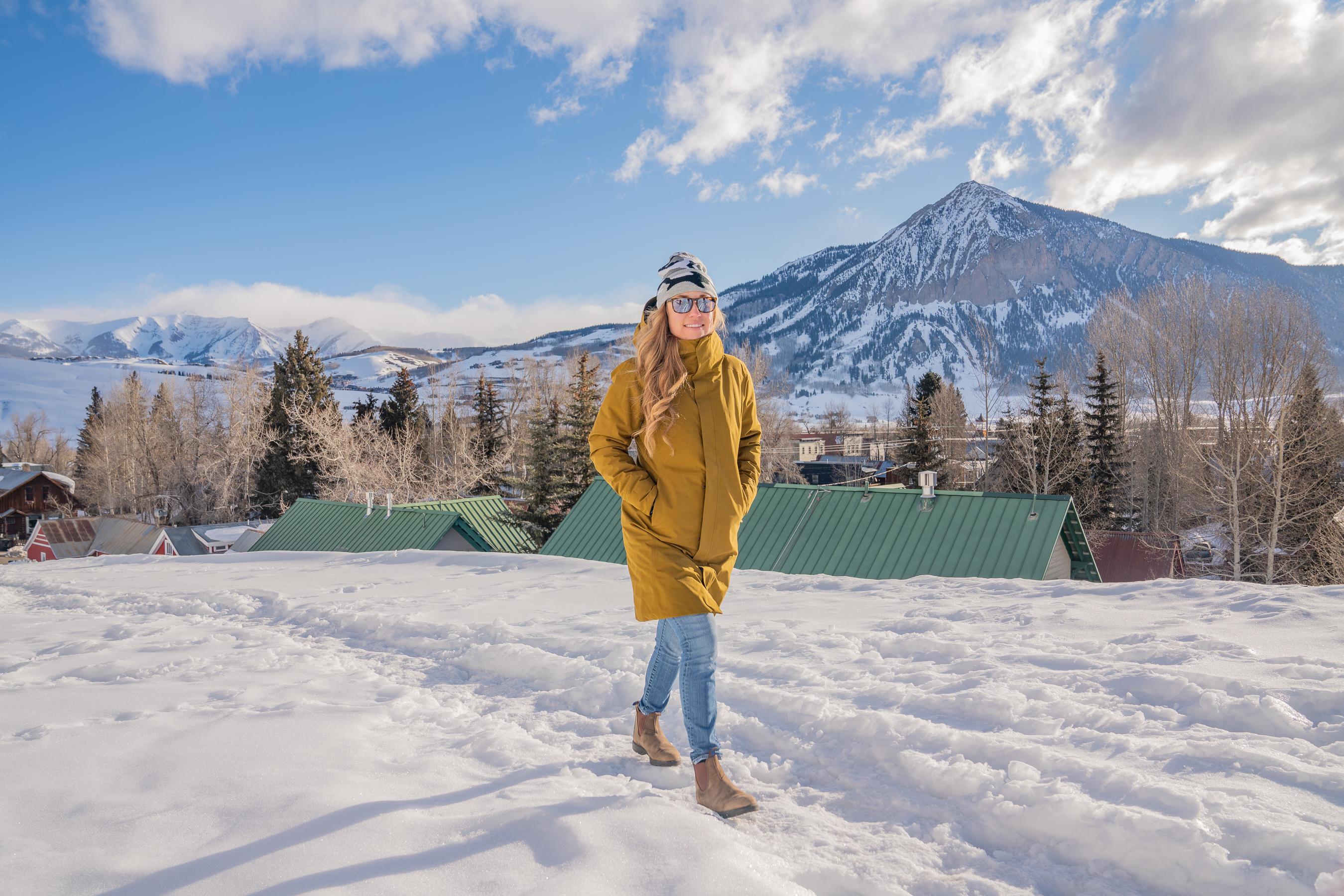
Buyer’s Guide: How to Choose the Best Women’s Winter Jacket
With so many different types of winter jackets for women on the market, it can be a challenge to find the right one catered to your needs. Most of the jackets in this guide are parkas — designs that are lengthier, bulkier, and hooded — hip-length puffer coats, and down jackets.
Unlike athletic performance coats, which are made of more breathable and lightweight materials, these women’s winter jackets tend to provide the weight and insulation needed to keep gals toasty throughout the day.
Well-suited for winter activities, down jackets are generally lightweight and shorter, closer to hip-length, so they tend to be better picks for more strenuous activities such as skiing, snowboarding, and snowshoeing. Be sure to check out our Best Down Jackets for Women guide if women’s down jackets seem like a closer fit for your needs.
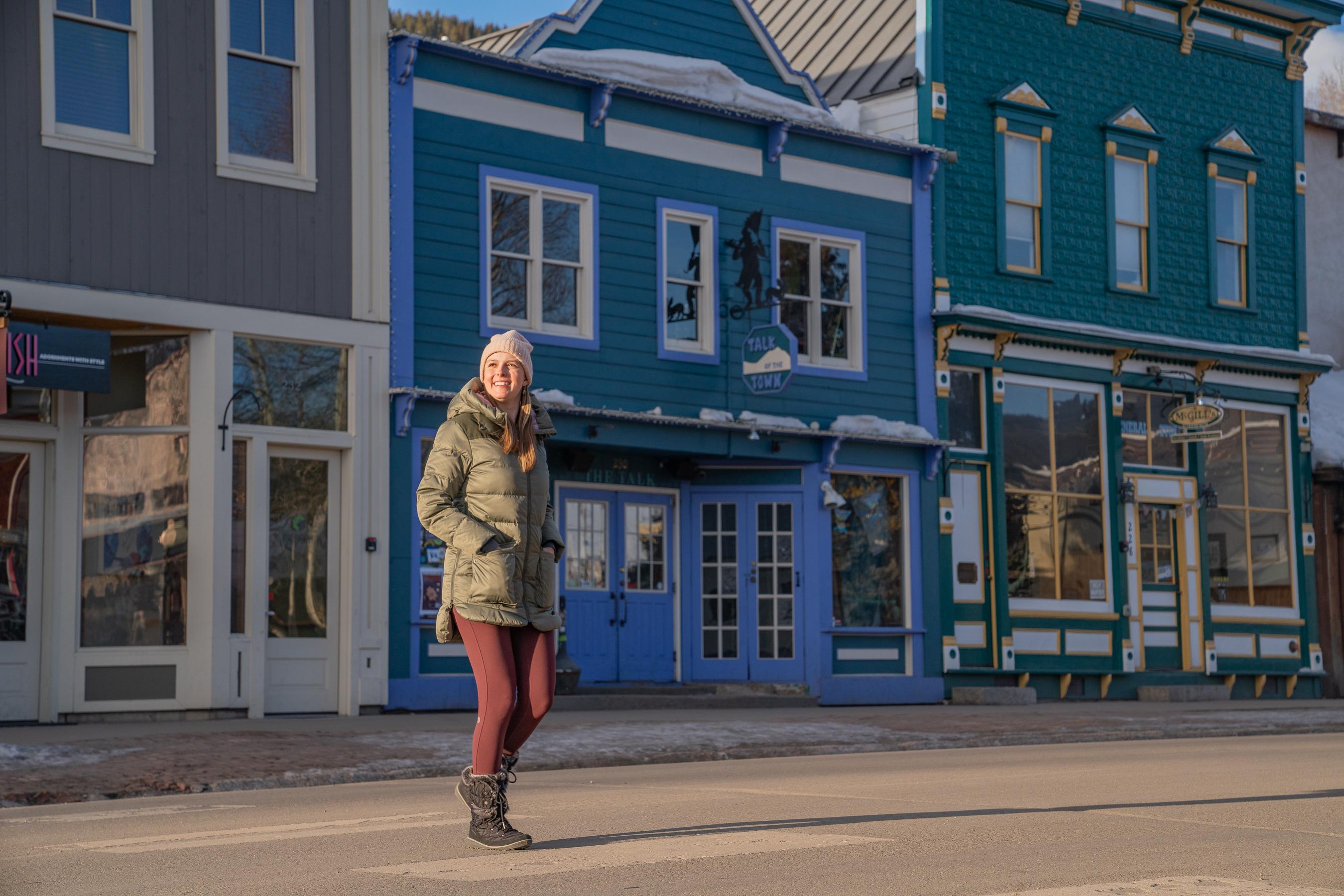
Insulation
Many of the best women’s winter jackets for everyday and lifestyle applications are insulated, offering warmth for cold or windy locations, as well as waterproofness to keep you warm and dry.
In frigid conditions, an insulated jacket is perfect for wearing after a gym workout, before you step into a frigid car, and for running errands.
The warmth level and type of insulation varies across each jacket from flannel to down fill or synthetic proprietary fabrics. Some insulated jackets are more water- and wind-resistant than others based on the type of fill, surface fabric, and how both have been constructed or chemically treated.
Down vs. Synthetic
Some jackets are made with down, and others are filled with synthetic insulation that mimics down. A handful of designs blend the two materials.
Synthetic insulation is made from polyester fibers and designed to imitate down clusters and properties with a few key differences. If you compare two equal-weight jackets, down is warmer than this alternative.
But synthetic insulation retains warmth even when wet. It’s also easier to wash and usually comes at a lower price point.
- Pros of Down: excellent warmth-to-weight ratio, comfort, compressibility, lightweight, high inherent warmth
- Cons of Down: inability to insulate when wet, more difficult to wash, pricier
Overall, in super-wet or mixed weather and when weight isn’t an issue, synthetics can be a better, safer choice. Alternatively, down can be treated with a coating that helps prevent moisture absorption, such as the Nikwax Fluorocarbon-Free Hydrophobic Finish applied to the down fill of the Rab Women’s Deep Cover Down Parka.
The Duluth Trading Women’s Ruffer Puffer Arctic Down Long Coat is filled with duck down for insulation. The Patagonia Women’s Tres 3-in-1 Parka is also a down-fill jacket, and 100% of that down is recycled from retired products. In comparison, the Fjallraven Nuuk Parka is a synthetic insulated jacket.
If it’s cold and dry out, down is optimal despite a higher cost. To go deeper, check out our guide to the best down jackets, which are generally more athletic and movement-oriented than the broader winter jackets category, to keep you covered in the cold.
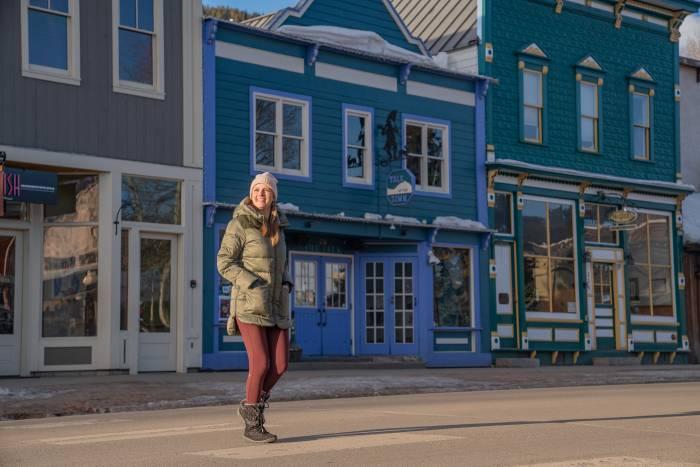
Temperature Rating
Temperature ratings for winter jackets refer to the lowest ambient temperature at which the coat can keep the wearer warm. Because there is no universal metric or third-party testing for temperature rating, the rating system varies between manufacturers. That final figure can be influenced by factors such as insulation, material thickness, and other design features like a fleece liner or faux fur around the hood.
Some manufacturers label the warmth of a jacket using a range of degrees F. Other brands operate on an internal sliding scale of warmness, which helps folks compare their products side by side for the warmest option.
For example, theLands’ End Women’s Down Maxi Winter Coat has a rating of -25 degrees F to 10 degrees F, which means it’s designed to keep the wearer warm in temperatures as low as -25 degrees F, with 10 degrees F being the warmest end on that scale. When choosing the best winter jacket for you, temperature ratings are a guideline and can vary based on individual preferences, activity levels, and the environment such as wind.
A brand’s internal scale of warmness can help provide a guideline for which jacket is ideal and how you can layer beneath it. Take The North Face Women’s Arctic Parka, for example. Under The North Face’s sliding temperature scale, the Arctic Parka is considered warmest on a scale of warm, warmer, and warmest.
Women’s winter jackets that are made for mild weather conditions, such as the Columbia Women’s Heavenly Long Hooded Jacket, can be worn with thicker or more insulated layers if you want additional insulation.
Ultimately, it is important to choose a winter jacket with a temperature rating that matches the expected conditions to ensure comfort and protection.
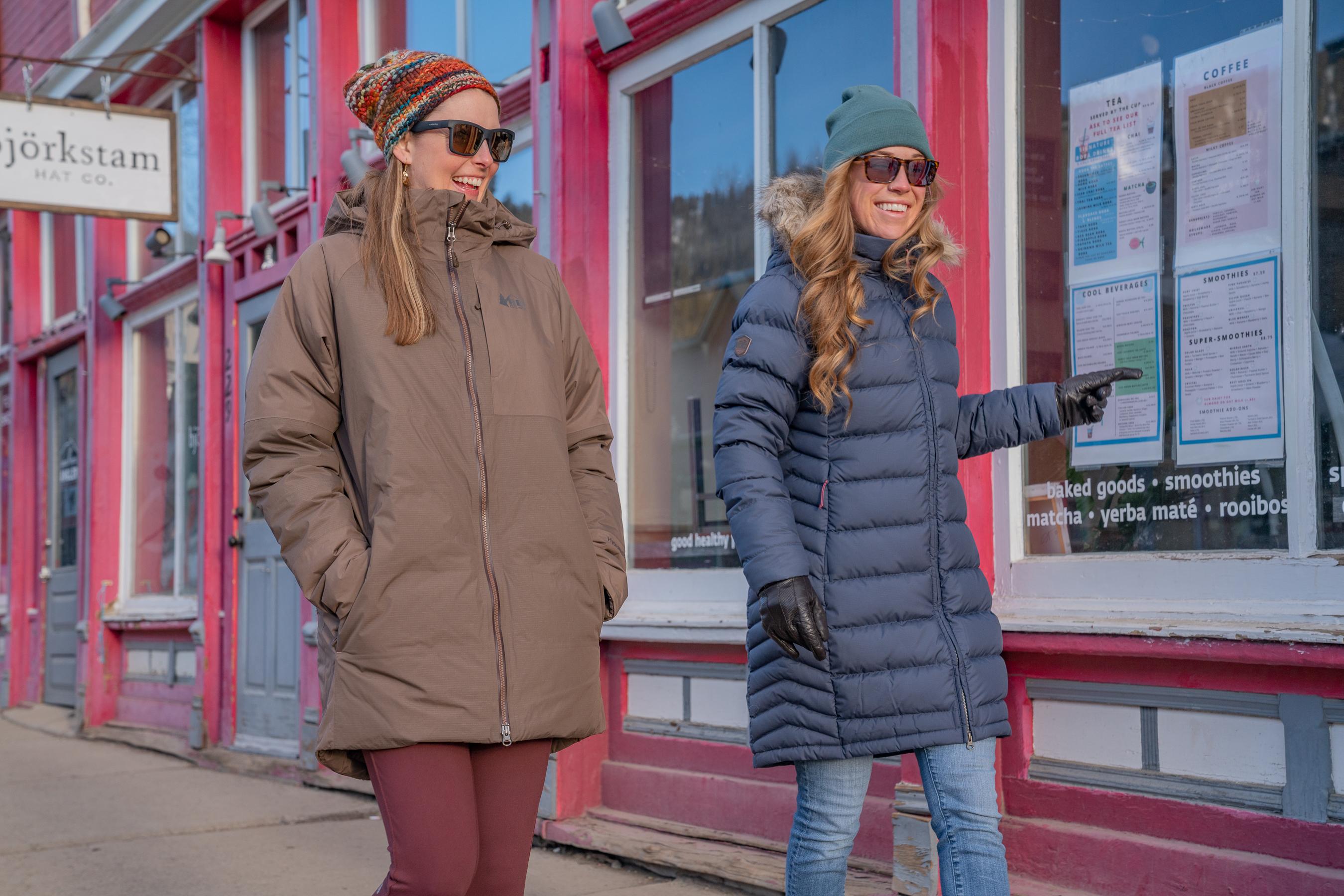
Fill
Fill power measures the loft and quality of the down. To calculate fill, a 1-ounce sample of down is compressed in a cylinder. Generally speaking, the higher the number, the warmer the jacket — though the fill power isn’t the only variable affecting a jacket’s warmth.
But the higher the fill quality, the less down is needed to create the same warmth. This is because it’s able to trap more air and warmth within the jacket. Higher fill power is also more compressible, loftier, more lightweight, and pricier.
Fill power ratings range from 300 to 900 and even higher. Most of the jackets on this list are in the 800-fill range, with a few clocking in above or below. Generally, the quality increases with the fill number:
- 400-500: fair quality
- 600: good quality
- 700: great quality
- 800: excellent quality
- 900 and above: highest quality
When deciding on the best women’s winter jacket for you, another element to consider is the fill weight.
Fill Power vs. Fill Weight
A down jacket’s fill power is the down’s quality and amount of loft. You’ll see jackets labeled as 600-fill or 800-fill, for instance. The fill weight, which is measured in ounces, reflects the density or amount of that down stuffed inside the jacket.
So when two 700-fill jackets have different weights, we know the heavier one is warmer.
On the other hand, if two down jackets weigh the same with different fill power (such as two 15-ounce jackets with 650 fill and 800 fill), the higher fill jacket is going to be less bulky and more compressible.
It’s also trickier to compare jackets with differing fill power. But in general, the lower the fill power, the less loft and warmth are provided.

Water Resistance and Hydrophobic Down
Down does not perform well when wet. And this is one of the places synthetic jackets tend to win out. In the past decade, there has been a growing use of hydrophobic down. As we previously mentioned, the recycled down of the Rab Women’s Deep Cover Down Parka is coated with Nikwax Fluorocarbon-Free Hydrophobic Finish for moisture resistance, for example.
Essentially, the down feathers are coated in a water-resistant polymer. It still doesn’t match the water-resistance of synthetics. But for light precipitation, hydrophobic down can’t be beat. The face fabric of some down jackets is treated with DWR to help block light moisture, too.
Waterproofness
When deciding on the best women’s winter coat for you, it is important to consider the garment’s waterproofness.
A waterproof jacket is ideal for being outside in wet snow, rain, or drizzly weather. The top-tier standard for waterproofness is GORE-TEX, which is a membrane integrated into various jacket designs. The material is waterproof, windproof, and breathable. Many brands likewise have a proprietary version of waterproof/breathable fabrics.
Waterproofness is measured by the amount of water that can be placed atop a fabric before it leaks. The rate of waterproof jackets varies from 5,000 to 20,000 mm or greater. The latter end of the spectrum leads to a less breathable fabric.
- 0-5,000 mm: Resistant to light rain, dry snow
- 6,000-10,000 mm: Waterproof for light rain and dry, non-heavy snow
- 11,000-15,000 mm: Waterproof for moderate rain and dry, non-heavy snow
- 16,000-20,000 mm: Waterproof for heavy rain and wet snow
- 20,000 mm and greater: Waterproof for heavy rain and dense, heavy snow
Many down and synthetic winter jackets are not waterproof but offer a degree of water resistance, which works fine in dryer winter climates and where the snow water equivalent (read: the amount of liquid water in the snow) is lower.
There are four general snow climates: coastal, transitional, intermountain, and continental. Generally, the closer you are to the coast, the more precipitation you’ll experience and the water content will be higher in the snow: it’ll be wetter and heavier! In contrast, the snow in continental climates is dryer, lighter, and accumulates less compared to the coast. That includes most of the Rocky Mountains, such as in Colorado. Intermountain regions and ranges show characteristics of both and transitional areas are similar to the coast but with less rain and snow.
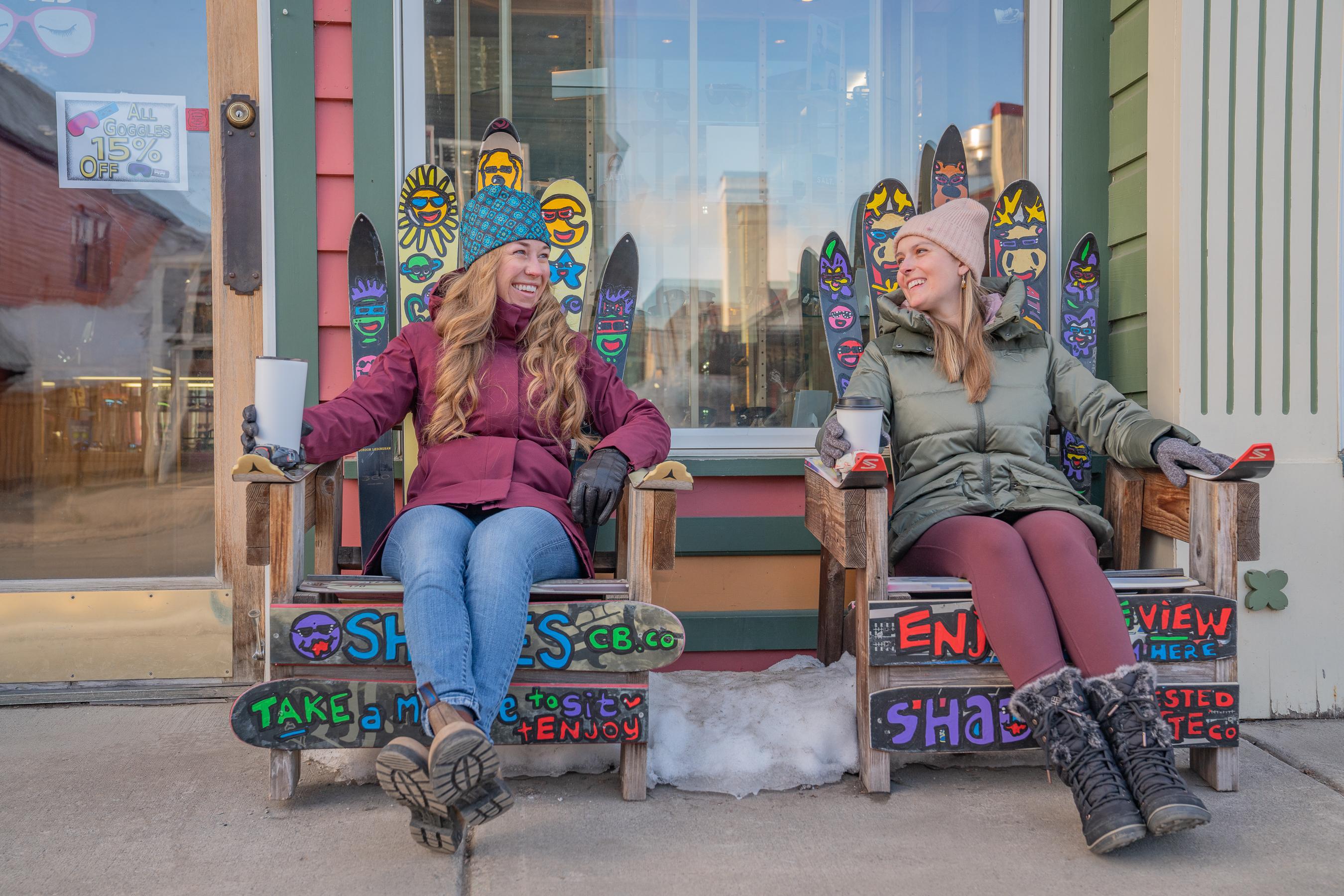
Examples according to the Utah Avalanche Center:
- Coastal (wettest): California, Washington, Oregon, coastal Alaska, and coastal British Columbia
- Transitional (moderately wet): Areas and targeted locations in Montana, northern Idaho, and Oregon
- Intermountain (mildly wet): Utah’s Wasatch Range, most of Idaho, Montana, and portions of Northeast Oregon and Southwest Colorado
- Continental (mostly dry): Colorado, Wyoming, New Mexico, interior Alaska, and interior British Columbia
For wetter environments, the Patagonia Women’s Tres 3-in-1 Parka includes a removable exterior waterproof shell, and the Arc’teryx Patera Parka is likewise waterproof. You can wear waterproof winter jackets in drier climates, too, though they generally cost more.
Other factors that can help make a jacket waterproof or water-resistant are the fill or face fabric treatments, which can be eco-friendly formulas or chemicals that are toxic for the environment. Jackets can also have sealed seams to block moisture.
Windproofness
If you live in a gusty climate like the Midwest, it is crucial to pick a winter jacket that can help protect you from those bone-chilling breezes. Many jackets are designed to be “windproof,” which is the apparel’s ability to prevent cold air from penetrating the fabric layers.
The windproofness of a jacket is usually measured in terms of wind resistance or a windproof rating, which is typically expressed in units of cubic feet per minute (CFM).
A jacket with a high CFM rating is less windproof than a jacket with a low CFM rating. For example, fabrics with a CFM rating of 60 tend to have no wind protection, while those with a 0 CFM rating are completely windproof. Our go-to windproof women’s winter jacket? The Duluth Trading Women’s Ruffer Puffer Arctic Down Long Coat is a great choice for those looking to protect themselves from the most frigid gusts.
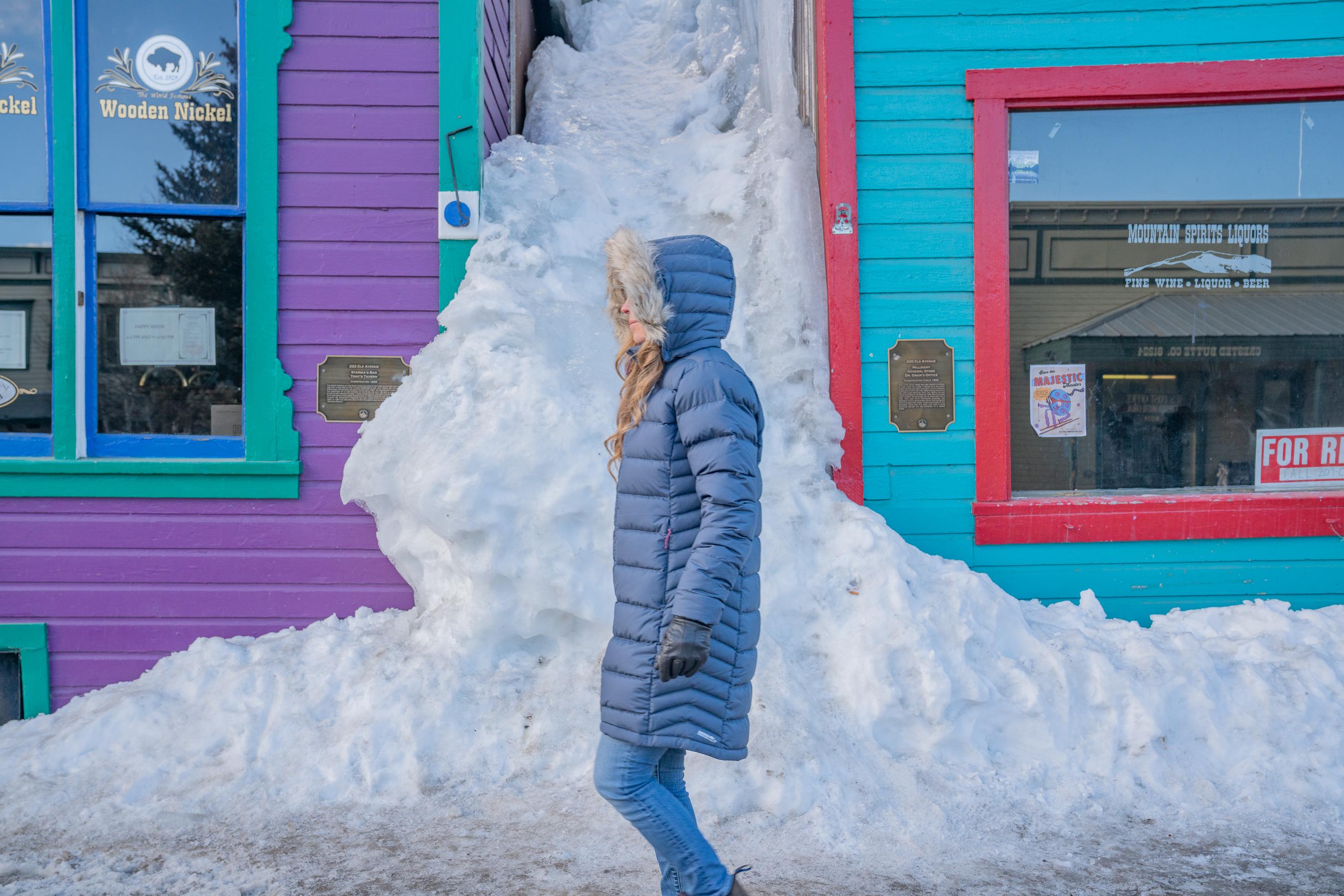
Collar and Hood
An ergonomic collar and hood are significant features for protecting your face, head, ears, neck, and hair against sun, snow, sleet, hail, wind, or rain. Pulling up a hood can help the body retain heat in chilly conditions while shielding you from the elements.
Jacket collars vary in height and ideally have an interior chin guard that feels snuggly against the face, a key component on a windy day on the sidewalk.
Hoods can be insulated or non-insulated. Certain designs have an elastic cinch in the back to snug up the overall fit or one along the hood’s hem. Jackets that are made for wetter environments might also have hoods with a small integrated rain brim, which is slightly rigid and blocks moisture from dripping down onto the face, such as the Arc’teryx Patera Parka and Patagonia Women’s Tres 3-in-1 Parka.
Some hoods are fixed, and others are removable via a zipper. Fashion-centric choices include a removable faux fur that zips or snaps onto the periphery of the hood, which offers a bit of additional safeguard from wind and snow flurries while adding style.
Sleeve Cuffs and Pockets
On some women’s warm winter jackets, the sleeve cuffs have a Velcro or zip closure, so you can cinch them down once you pull the jacket on. But many cuffs are sleek and simply stretch when you slide your hands through, meaning it’s easier to pull the jacket on before you put on your gloves. The shape of cuffs is either tapered or straight across and certain designs are lengthier, offering extended shelter for your hands.
A handful of higher-end designs have an inner wrist gaiter — a stretchy fabric for additional warmth that sometimes has thumbholes to help secure the fabric over the top of the hand.
Most women’s winter jackets include two exterior hand pockets with zip closures. Traditional hand pockets have a side entry while alternative designs offer a top entry for hand pockets. Often, there is at least one interior chest pocket with a zip closure, which can be great for chambering a credit card, ID, or key.
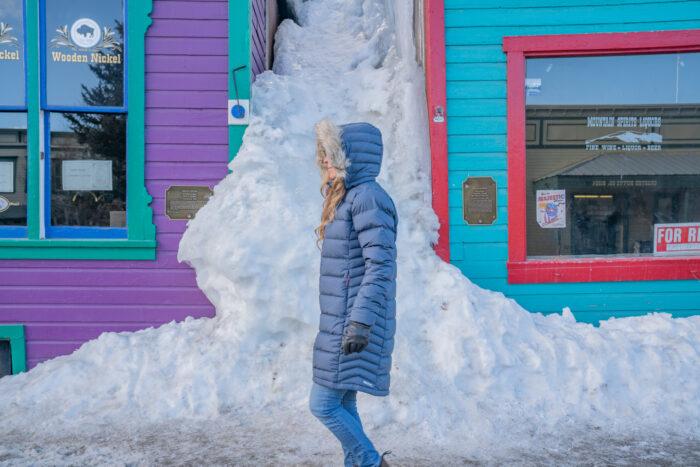
Fit and Size
Women’s winter jackets are generally trimmer with a more streamlined fit, or they can be roomier and boxier with a more relaxed silhouette.
Both options can be comfortable. A roomier jacket is better if you need a greater range of movement or if you plan to wear a bunch of layers beneath your jacket. You can still add layers beneath a fitted style, but you might want to consider sizing up, because often the arm, shoulder, or chest areas can get too snug with a midlayer or two beneath.
Size-wise, each manufacturer has its own size charts. Be sure to take your personal measurements and match them up with the size charts, which can differ across brands.
Some companies provide more size inclusivity with broader offerings. That includes The North Face, which has a size run of XS to XXL. Lands’ End offers XS to XXXL including petite and tall options, as well as plus sizes in 1X-3X.
Everyone’s body is unique, so check the exchange and return policy before you buy.
Weight and Compressibility
A winter jacket’s weight and compressibility can be an important variable for cargo space and airline travel as well as storage and closet space. Otherwise, a jacket that’s used for everyday errands and social events will generally weigh more than a lightweight technical down jacket that’s made for athletic pursuits. Having a lightweight design for an everyday jacket is typically less of a priority, because the comfort, ergonomics, and high warmth factors are the most important.
The longer a jacket is, the more it will weigh and the more space it will take up. The heavier a jacket is, the warmer it will be (read more about fill weight above.) If you don’t need a warm winter jacket that’s built for arctic conditions and need one for milder winter temperatures that hover above or around freezing, then the jacket will most likely weigh less.
The lightest women’s winter jackets in our top picks are the 800-fill Lands’ End Women’s Wanderweight Ultralight Packable Down Coat, which is 376 g, and the heaviest options are The North Face Women’s Arctic Parka at 1,290 g and Fjallraven Nuuk Parka, which is 1,732 g.
Ultimately, don’t compromise a jacket’s safety or comfort features and adequate warmth to drop grams.
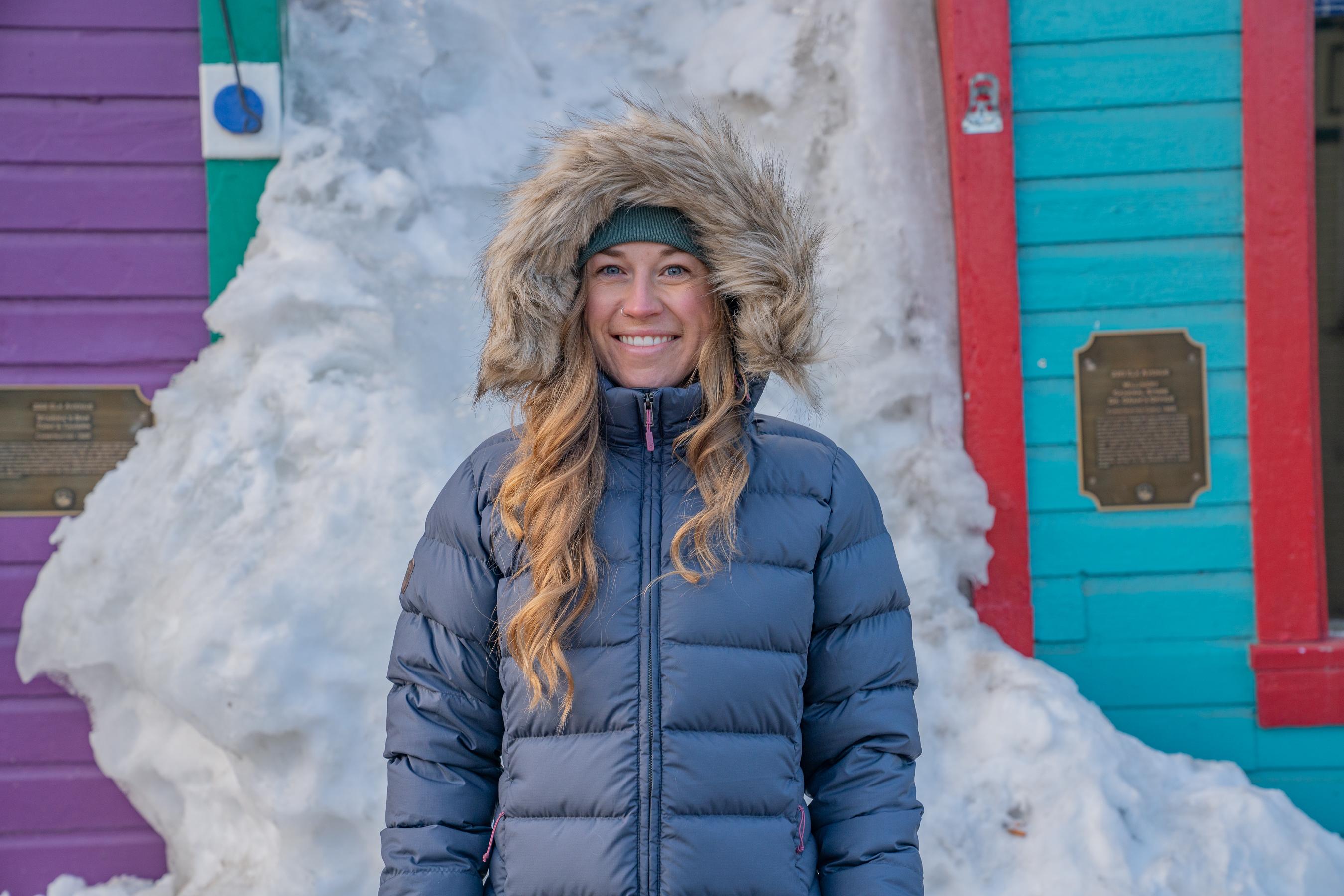
Length and Zippers
The length of women’s winter jackets varies, which affects the overall warmth, protection from the elements, and range of movement.
One of the best winter jackets for women on the shorter side, at least among our selection, is the Stio Women’s Colter WINDSTOPPER Down Jacket, which reaches a bit lower past the mid-glute.
Many of our top winter jacket choices are longer, ranging from mid-thigh to knee-level to below-the-knee options. Longer jackets are inherently warmer and insulate our backside and legs from moisture or biting wind, which is nice for bike commuting or staying warm in a cold seat. Some jackets even reach the ankles for a full-on blanket to-go. Even longer versions, like the Rab Women’s Deep Cover Down Parka, can feel like you’re held in a portable mini sleeping bag!
However, we aren’t always looking for a long coat. Shorter lengths offer a greater range of motion and can be more functional, such as when we’re shoveling, climbing into the truck bed, or if we’re stepping onto a cruiser bike without a lower top tube bar.
Jackets that are shorter to mid-length either have a uniform hem that is even all the way around or they feature a tapered silhouette that’s longer in the back and higher in the front. Tapered cuts can look fashion forward and offer a tad more armor for the backside, which we like. The longer and longest designs usually have a level length on all sides like the Lands’ End Women’s Wanderweight Ultralight Packable Down Coat.
That said, a handful of silhouettes integrate double two-way zippers in the front, as well as zippers on either side near the hips, to offer a broader circumference for a broader range of movement. The smartest design we’ve seen is that arena is on the Stio Women’s Colter WINDSTOPPER Down Jacket, which features two two-way zippers on each side from the armpit to the hem. Beneath the zipper, the uppermost section has a 5.5-inch mesh panel for ventilation beneath the armpits. The remaining lower length of the panel is solid fabric to guard against the elements.
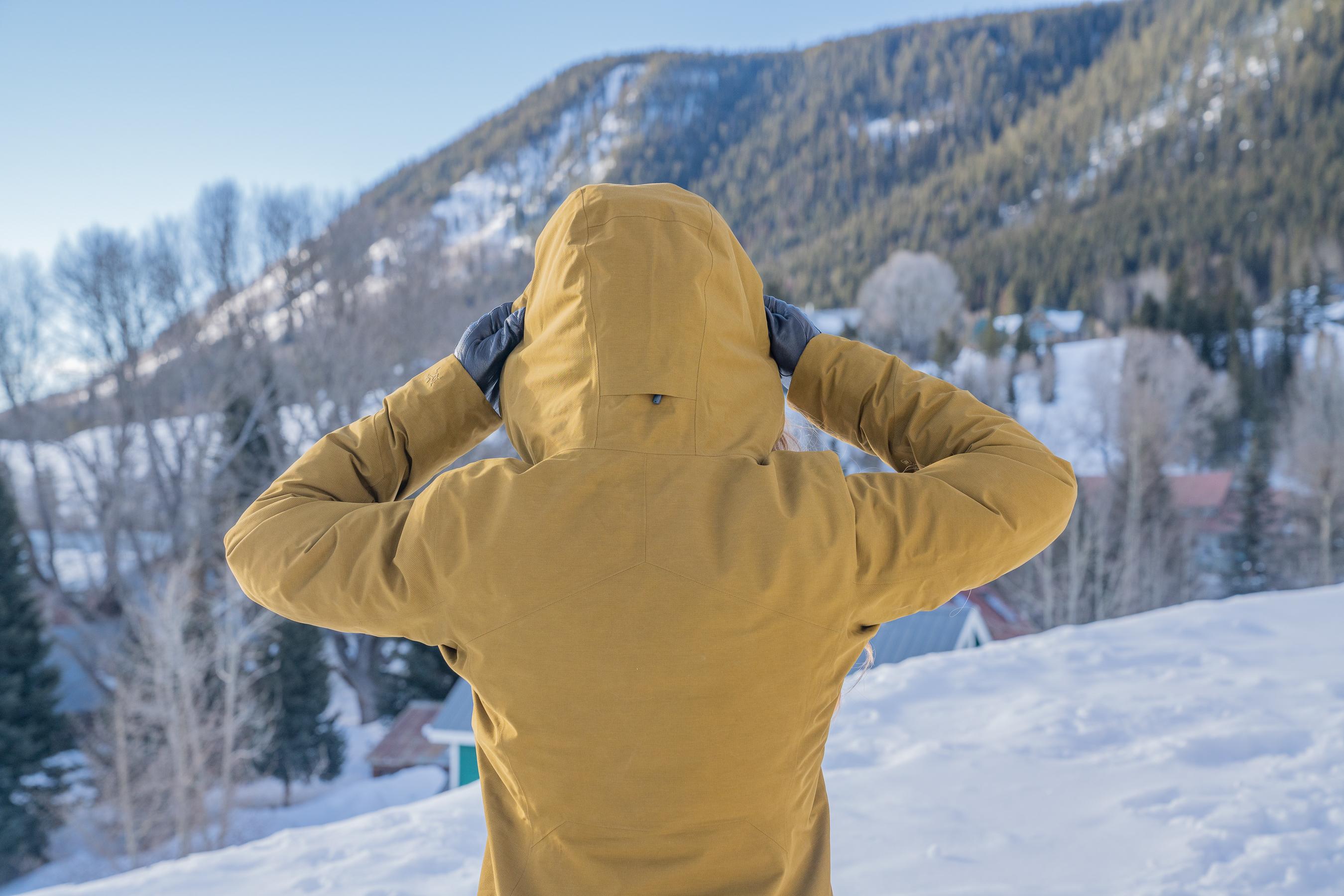
Responsibly Sourced Down
Brands at the forefront of sustainable change are swapping out new down for recycled down. The Rab Women’s Deep Cover Down Parka and Patagonia Women’s Tres 3-in-1 Parka are both filled with 100% recycled down.
Outdoor industry brands have also made an effort to source new down ethically without animal cruelty and create transparency in the global supply chain.
Various certifications exist such as The Global Traceable Down Standard (Global TDS) and Responsible Down Standard (RDS), which are certifications offered via the National Sanitation Foundation (NSF). ALLIED Feather & Down launched the TrackMyDown program, which won a 2019 ISPO Gold Award, allows everyday users to find out where and how their winter jacket’s down feathers were sourced. It’s quite simple to use — just type in the lot number found on your jacket’s hang tag and press enter.
The TrackMyDown database provides information regarding the farms where the birds were raised, as well as how to properly care for and increase the longevity of your insulation.
Without establishing transparency and down standards, animal abuse can persist within the supply chain. A synthetic winter jacket can be a more comforting choice if you want to avoid animal byproducts, like the Fjallraven Nuuk Parka.
If you prefer a natural down winter jacket, the Rab Women’s Deep Cover Down Parka and Patagonia Women’s Tres 3-in-1 Parka both have 100% recycled down from retired products.
A wide variety of jackets on our list have RDS-certified down including the REI Co-op Norseland Insulated Parka 2.0, Stio Women’s Colter WINDSTOPPER Down Jacket, Lands’ End Women’s Down Maxi Winter Coat, Arc’teryx Patera Parka, The North Face Women’s Arctic Parka, and Lands’ End Wanderweight Ultralight Packable Down Coat.
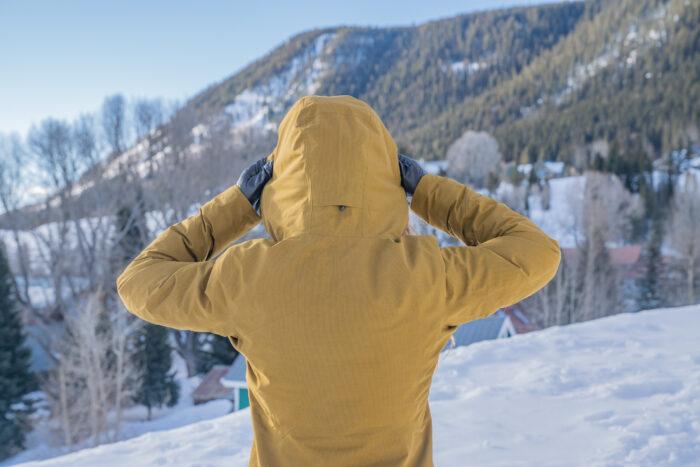
Eco-Friendly, Chemical-Free, and Recycled Materials
Beyond responsible down, winter jackets have an opportunity to include a bunch of eco-friendly design traits. Some jackets are created with PFC-free DWR treatments for the face fabric or down fill. Several of our top choices incorporate a fluorocarbon-free hydrophobic treatment on the down to repel moisture, like the Lands’ End Wanderweight Ultralight Packable Down Coat and Lands’ End Women’s Down Maxi Winter Coat, which both use HyperDry. The Rab Women’s Deep Cover Down Parka is likewise treated with a Nikwax Fluorocarbon-Free Hydrophobic Finish.
The treated surface of many jacket fabrics is now chemical-free. That includes the fluorocarbon-free DWR, called Pertex Quantum, used on the Rab Women’s Deep Cover Down Parka. All fabrics in the Patagonia Women’s Tres 3-in-1 Parka are PFC-free including the membrane and surface coatings. The DWR finish of the Stio Women’s Colter WINDSTOPPER Down Jacket is PFCEC-free, meaning the treatment is void of all PFCs of Environmental Concern (PFCEC).
While we’ve seen textile advancements in the outdoor industry that are designed to withstand elements without a chemical DWR treatment at all, we haven’t tested women’s winter jackets with those materials, yet.
Other jacket designs are made with recycled materials such as recycled down and recycled polyester for the fabric and liner. A few spots where we see jackets lag with recycled materials include the wrist cuffs or zipper pulls. Among our top picks, the recycled polyester liner in the REI Co-op Norseland Insulated Parka 2.0 is also Bluesign-approved. We’re also impressed by the 100% recycled down fill and 100% recycled 50-denier fabric of the Rab Women’s Deep Cover Down Parka.
The Patagonia Women’s Tres 3-in-1 Parka checks the box for sustainability on a stack of levels: 100% recycled polyester shell, 100% recycled shell lining, 100% recycled polyester zip-out shell and lining, 100% recycled down fill, and Bluesign-approved fabrics treated with PFC-free DWR. Plus, it’s made in a Fair Trade Certified factory.
Other outer layers guarantee Fair Trade sewing or Bluesign or Oeko-Tex-certified fabrics.
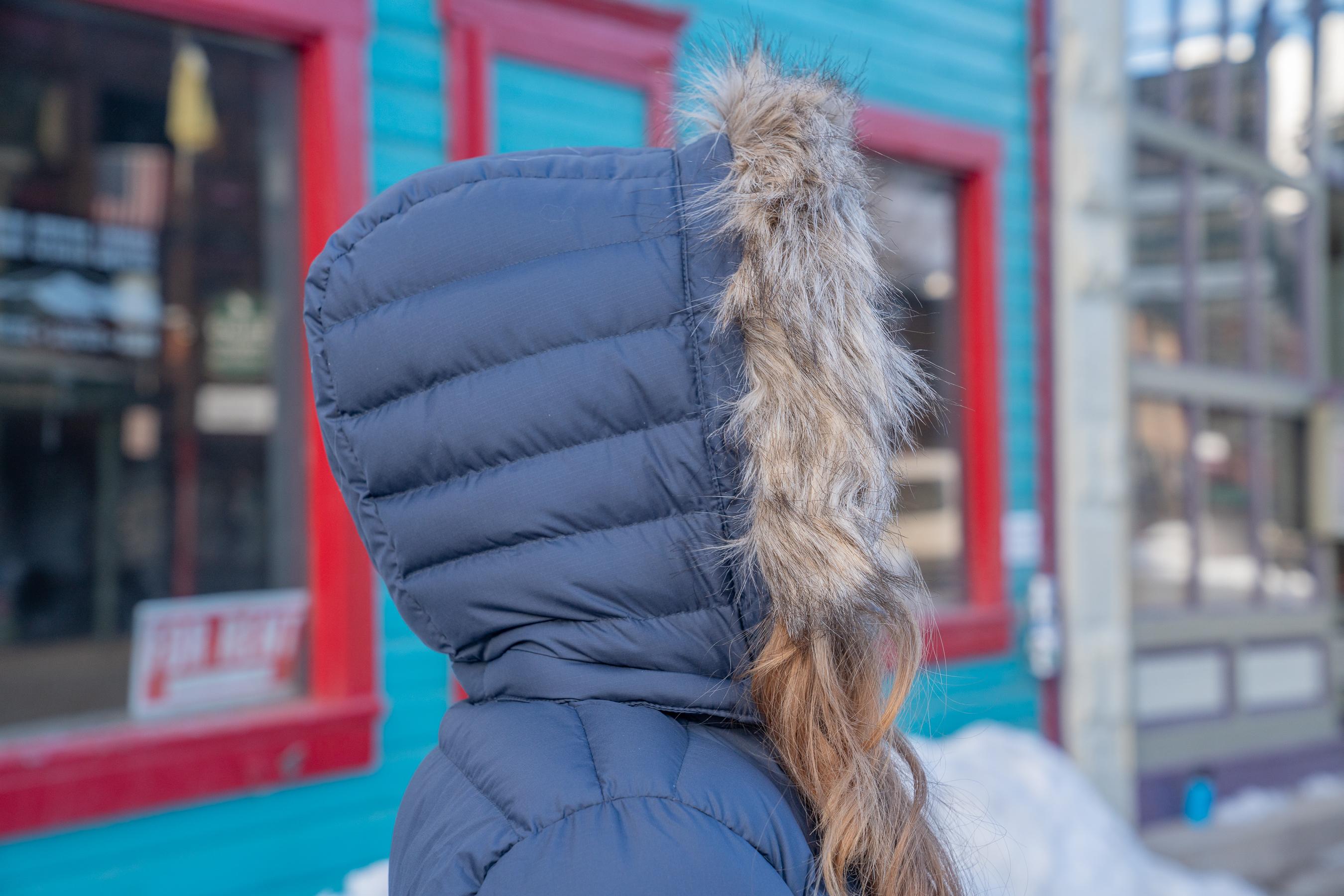
How to Layer
Layering effectively under a winter jacket is essential to staying warm and comfortable on those chilly days.
We recommend starting with a moisture-wicking women’s base layer to keep your skin dry and warm. Choose a fabric like merino wool, synthetic materials, or a blend that fits snugly to your body. This layer should be close-fitting but not so tight that it restricts any movement.
For extra warmth, you can add a midlayer over your base layer. Materials such as down, fleece, or synthetic insulation work well if you’re looking for insulation. Choose a sweater, vest, or jacket as a midlayer — any of those options work — depending on the weather conditions and what fits best with your outer layer. If your women’s winter jacket already includes an insulating midlayer, such as the Patagonia Tres 3-in-1 Parka, you can probably omit adding the extra garment — but also, multiple midlayers can be perfectly fine and appropriate.
Remember, the key to layering is to find a balance between warmth and mobility. Too many layers can restrict your movement and make you feel cumbersome — like how we imagine the Michelin Man feels — while too few layers can leave you feeling cold. By layering to your needs, you can stay warm and comfortable no matter what the winter weather brings.
Price
Our budget picks in this lineup include the REI Co-op Norseland Insulated Parka 2.0 ($199) and Columbia Women’s Heavenly Long Hooded Jacket ($160)followed closely in price by another top choice, the Lands’ End Women’s Wanderweight Ultralight Packable Down Coat ($230). Generally, if you find a warm, dependable, well-made, and comfortable women’s winter jacket that’s hovering near $200, that’s an economic option for an essential cold-weather tool. We get it. That baseline is no small investment.
At full price, the most expensive jacket on our list is among the warmest and offers the most coverage against the elements: the Arc’teryx Patera Parka ($800). As fill power and fill weight increase, the warmth increases, and you’ll see the price of a jacket go up. That’s one reason why super lightweight, durable, technical cold-weather jackets are pricy. On this list of lifestyle winter jackets for women, the longer parkas also inherently cost more because they require more resources and material to develop.
A huge variety of warm winter jackets exist within those two prices. In the second price tier is the Rab Women’s Deep Cover Down Parka ($315), Lands’ End Women’s Plus Size Down Maxi Winter Coat ($290), and The North Face Women’s Arctic Parka ($350).
Jackets that are more expensive feature more technical design features, materials that are more robust against a range of weather conditions and materials, as well as high-end sustainable materials. That includes the Stio Women’s Colter WINDSTOPPER Down Jacket ($429), Patagonia Women’s Tres 3-in-1 Parka ($699), Arc’teryx Patera Parka ($700), and Fjallraven Nuuk Parka ($500).
